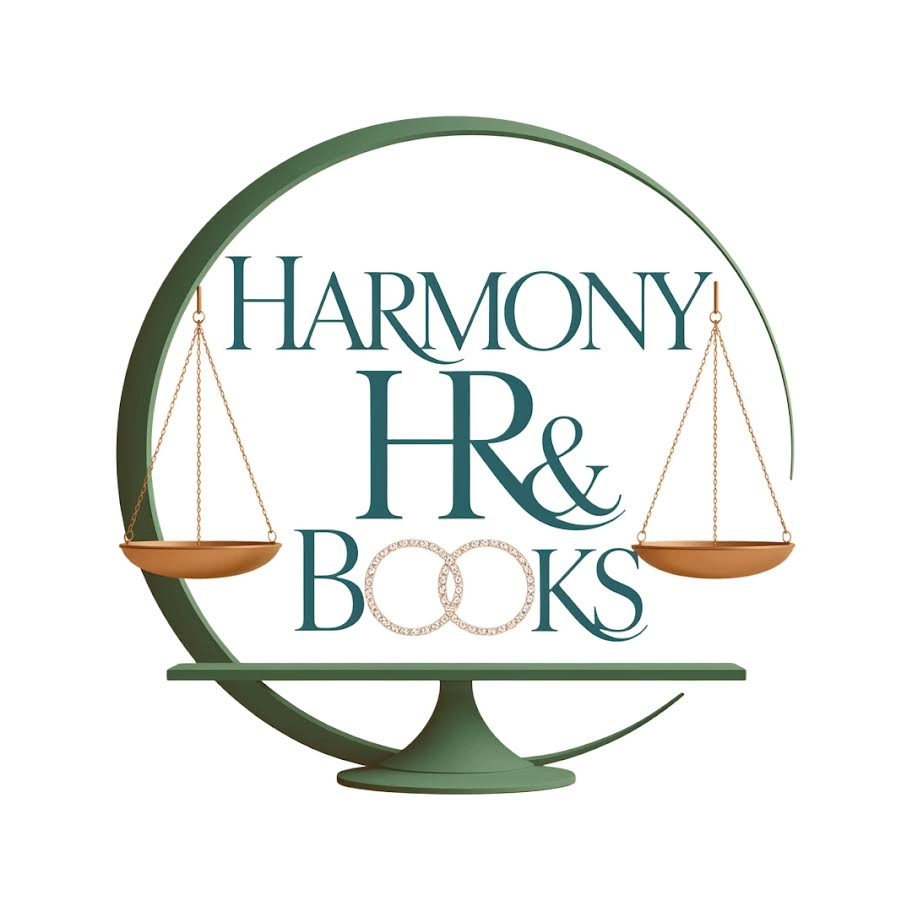How to Streamline Your Payroll in 2025: A Step-by-Step Guide for Michigan Businesses
Running a small business in Michigan comes with its share of challenges, and payroll can be one of the most time-consuming. With Michigan’s minimum wage rising to $10.85 per hour in 2025 and evolving state and federal regulations, staying compliant while keeping your payroll efficient is critical. At Harmony HR & Books, we help businesses simplify their HR and bookkeeping processes. This step-by-step guide will walk you through streamlining your payroll in 2025, ensuring compliance and saving you time.
Step 1: Understand Michigan’s 2025 Payroll Requirements
Michigan’s labor laws are specific, and non-compliance can lead to penalties. Here’s what you need to know for 2025:
Minimum Wage: The minimum wage is $10.85/hour for non-tipped employees and $4.11/hour for tipped employees, per the Michigan Department of Labor and Economic Opportunity.
Overtime: Non-exempt employees must receive 1.5 times their regular rate for hours worked over 40 per week.
Paid Leave: The Michigan Earned Sick Time Act requires businesses with 50+ employees to provide up to 72 hours of paid sick leave annually.
Tax Filings: Federal (e.g., IRS Form 941) and state (e.g., Michigan Treasury Form 5080) payroll taxes must be filed accurately and on time.
Action Item: Review your payroll records to ensure compliance with these regulations. Use a checklist to track requirements.
Step 2: Choose the Right Payroll Software
Manual payroll processes are prone to errors and time-consuming. Modern payroll software like Gusto or QuickBooks Payroll can automate calculations, tax filings, and employee payments. These tools integrate with bookkeeping systems, reducing duplicate work.
Gusto: Offers automated tax filings, employee self-service portals, and compliance updates.
QuickBooks Payroll: Syncs with QuickBooks Online for seamless bookkeeping and payroll management.
Action Item: Sign up for a free trial of Gusto or QuickBooks Payroll. Compare features to find the best fit for your business size.
Step 3: Set Up Employee Records Correctly
Accurate employee records are the foundation of streamlined payroll. Ensure you have:
Tax Forms: Collect W-4 (federal) and MI-W4 (Michigan withholding) forms for each employee.
I-9 Verification: Verify work eligibility within three days of hire, per federal law.
Direct Deposit: Set up bank details for secure, timely payments.
Action Item: Use payroll software to digitize employee records. Store forms securely to comply with IRS retention rules (7 years).
Step 4: Automate Tax Calculations and Filings
Payroll taxes are complex, with federal (Social Security, Medicare, income tax) and Michigan state (income tax, unemployment insurance) obligations. Automated payroll software can:
Calculate withholdings based on W-4 and MI-W4 inputs.
File federal and state taxes (e.g., IRS Form 941, Michigan Form 5080).
Generate W-2s and 1099s at year-end.
Action Item: Configure your payroll software to handle automatic tax calculations and set reminders for filing deadlines (e.g., quarterly Form 941 due April 30, July 31, October 31, January 31).
Step 5: Integrate Payroll with Bookkeeping
To avoid errors, your payroll system should sync with your bookkeeping software. For example, QuickBooks Payroll integrates directly with QuickBooks Online, automatically categorizing wages, taxes, and benefits as expenses. This ensures accurate financial reports like profit and loss statements.
Action Item: Link your payroll and bookkeeping software. Reconcile payroll accounts monthly to catch discrepancies early.
Step 6: Monitor and Review Regularly
Regular audits prevent costly mistakes. Each month, check:
Pay rates align with Michigan’s $10.85/hour minimum wage.
Overtime hours are calculated correctly.
Tax withholdings match employee forms.
Bank reconciliations align with payroll records.
Action Item: Schedule a monthly payroll review. Use reports from your payroll software to track key metrics.
Step 7: Outsource for Efficiency
If payroll feels overwhelming, outsourcing to experts like Harmony HR & Books can save time and ensure compliance. We handle everything from tax filings to employee onboarding, letting you focus on growing your business.
Action Item: Contact Harmony HR & Books for a consultation to explore outsourcing options tailored to your needs.
Get Started with Our Free Bookkeeping Starter Guide
Streamlining your payroll is just one part of financial success. To set up a robust bookkeeping system that complements your payroll, download our Bookkeeping Starter Guide for Small Businesses for free at www.harmonyhrbooks.com. This guide includes checklists, tips for using QuickBooks, and steps to stay compliant.
Take Control of Your Payroll Today
Don’t let payroll stress hold your business back. Follow these steps, leverage tools like Gusto or QuickBooks, and consider outsourcing to Harmony HR & Books for peace of mind. Visit www.harmonyhrbooks.com or email info@harmonyhrbooks.com to learn how we can support your HR and bookkeeping needs.
Disclaimer: This guide is for informational purposes. Consult a professional for specific payroll advice.
